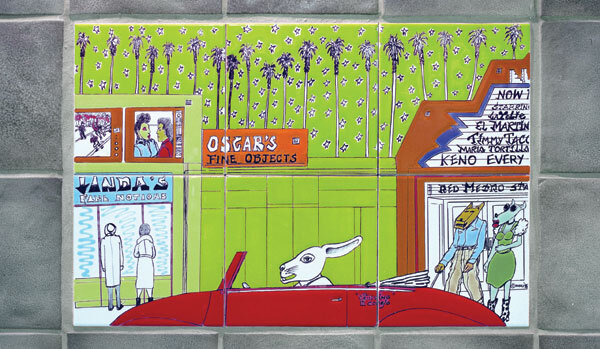Text By Jessica Andrea Ramos
Madrid, Spain
Who deserves to be immortalized in a mural? Stephen Farley, the artist, and the Foothill Goldline Authority, will decide for their new community-project dedicated to the citizens of Pomona. The project? A mural for Pomona Gold Line Station anticipated to be completed by 2025.
The once counterculture movement of murals has shifted into the mainstream art world, with pieces commissioned for economic development and restoration projects. They’ve been used in youth programs, to increase public perception, and to build community. The mural dates back to the archaic paintings in the Paleolithic era, but the contemporary mural's popularity began in the 20th century, usually heavy with social and political commentary by Chicano and Black artists in response to the Chicano and civil rights movements.
Murals hold a lot of political significance. The recent murder of George Floyd by police has influnced people around the world to create public art in his honor, and in honor of the Black Lives Matter movement. Tres Los Grandes was a trio of Mexican-American muralists creating art in response to the Mexican Revolution of the 1920s. In both instances, the art form was a way for dissatisfied and underrepresented groups to have a public voice.
Photography by Julian Lucas
The commissioned piece titled, ‘The Power of Pomona is People,’ aims to preserve community members of the past and present by asking current Pomona citizens to submit the story of a local who has inspired them. Once submissions have closed, it will be up to the artist, Farley, and the predominantly white committee, to decide whose image and story represents Pomona. But do we trust Farley and the Foothill Goldline Authority to get it right? Do they have their finger on the pulse of the city of Pomona, its tribulations and its struggles? Or is this mural in similar vein to the Black Lives Matters street art commissioned to span across 16th Street NW in Washington D.C. in a message that garnered public media attention, but failed to answer the demand for justice by Black citizens.
The project does not take into account a majority of its audience. Why is the website not offered in spanish, when, according to the U.S. census from 2019, 71% of people living in Pomona are Latino? The committee asks for compelling and quality stories effectively minimizing the chances for those who aren’t strong writers. Will the accepted submissions operate on the missguided practices of ‘the model minority,’ where black and brown people have to perform above the average to be considered of equal value to their white peers. And why wasn’t a Pomona or LA-native commissioned to bring more authenticity to the project? Angel Once is a popular Hispanic street artist based in Los Angeles who could have been commissioned. Hispanic artist, David Flores, has a similar style to what is depicted on the official website, is based in Los Angeles, and has done street art for the city of Pomona years before with a mural of Karl Benjamin, a white professor from Pomona College.
Photography by Julian Lucas
The Karl Benjamin piece was commissioned and completed years ago within less than two months, but the mural dedicated to late Gilbert Magu Luján, an influential Chicano artist and Pomona resident who founded the Chicano collective of artists Los Four was commissioned in 2019, recently begun, and now postponed due to Covid. It is unfortunate that we may not see the Luján mural in quite some time, especially considering his impact on the Pomona arts colony.
Without the authenticity behind the message, the mural feels like a superficial way to uplift Pomona’s public image rather than answer to the demands of Pomona citizens for reform on the issues of homelessness, crime and violence, and city restoration. The city needs to do more than allow for Pomona citizens to fall victim to the circumstance of living in a low-income neighborhood by increasing the budget to allow for more resources like access to health care, nutrition, and opportunity for all, and working on the issues of homelessness and alcoholism/drug addiction.
Action needs to accompany art, otherwise it remains a shallow gesture that benefits only from aesthetics.



















